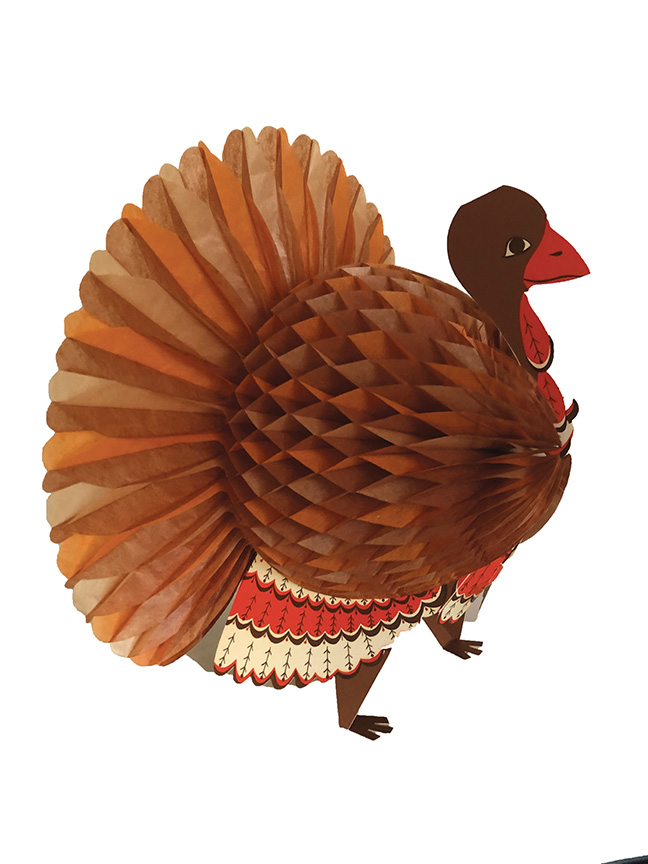
Dorri Partain
Contributor
Gobble, gobble! Make room on your Thanksgiving dinner table for this turkey decoration, then just fold it away until next year.
Often called “honeycomb tissue” due to the open spaces created when unfolded, this type of paper decoration first appeared as a frill on Valentine cards produced in Germany around 1890.
American businessman Martin Luther Beistle (1875-1935), was visiting Germany in 1900 and was fascinated by the honeycomb paper technique. Even though his business specialized in imprinted calendars, he returned to his home in Pittsburg, Pa., with new ideas for holiday decorations.
By 1907 he had created the Beistle Company, partnered with the Paper Novelty Company and moved his business to Shippensburg, Pa., becoming the first manufacturer to offer honeycomb tissue decorations in America by 1910.
Due to the popularity and other companies copying his designs, he worked with Raymond Fleming and patented the Folding Ornament of Expanding Tissue (US1545750A), the Christmas bell, in 1925. Beistle’s son-in-law, Henry Luhrs, also patented several unique folding ornaments and decorations for Valentine’s Day, Christmas and Easter during the 1930’s.
The honeycomb technique requires multiple layers of colored tissue glued in an alternate pattern, stapled together on one end, and stabilized by a cardboard cover that, once opened, creates a three-dimensional decoration secured by tabs; some can hang from the ceiling, and others are designed as tabletop decor.
While the Beistle Company has produced various turkey designs over the years, the decoration above was manufactured by Hallmark Cards for their Ambassador line, and requires the user to lock tabs B,C, and D to achieve the completed decoration. Suggested uses are as a mantle decoration, dinner table decoration, party decoration or clever gift, and retailed for $1.00 in the late 1960’s.



















